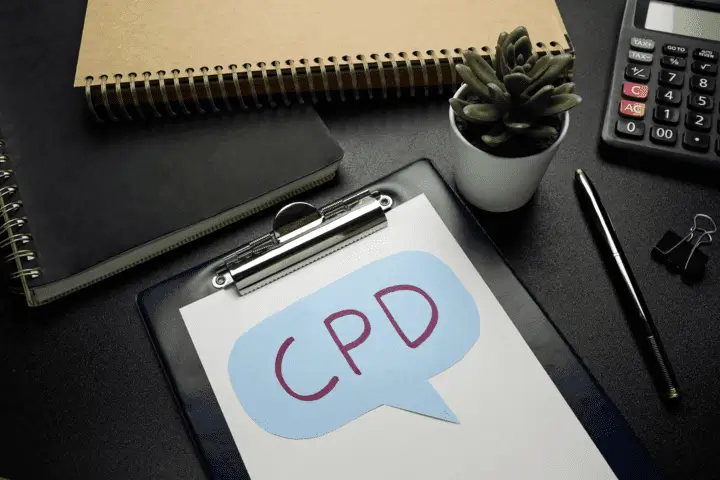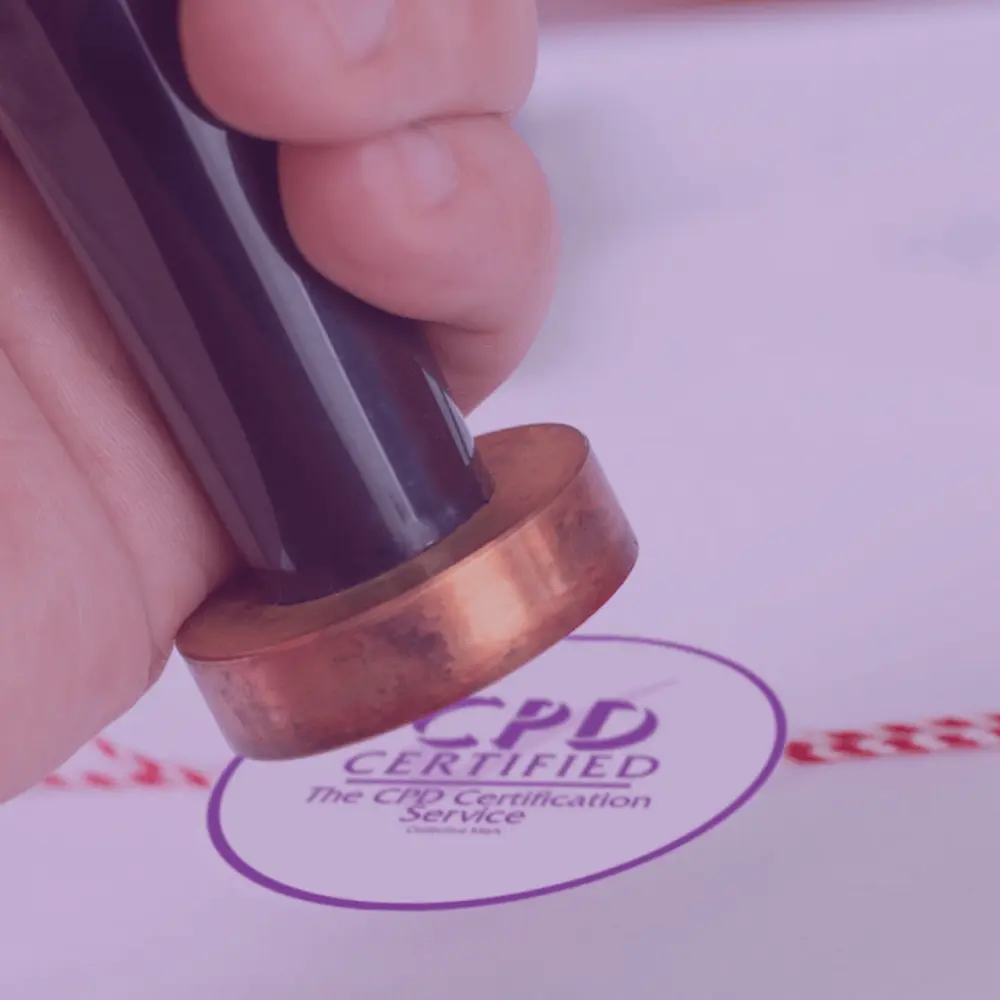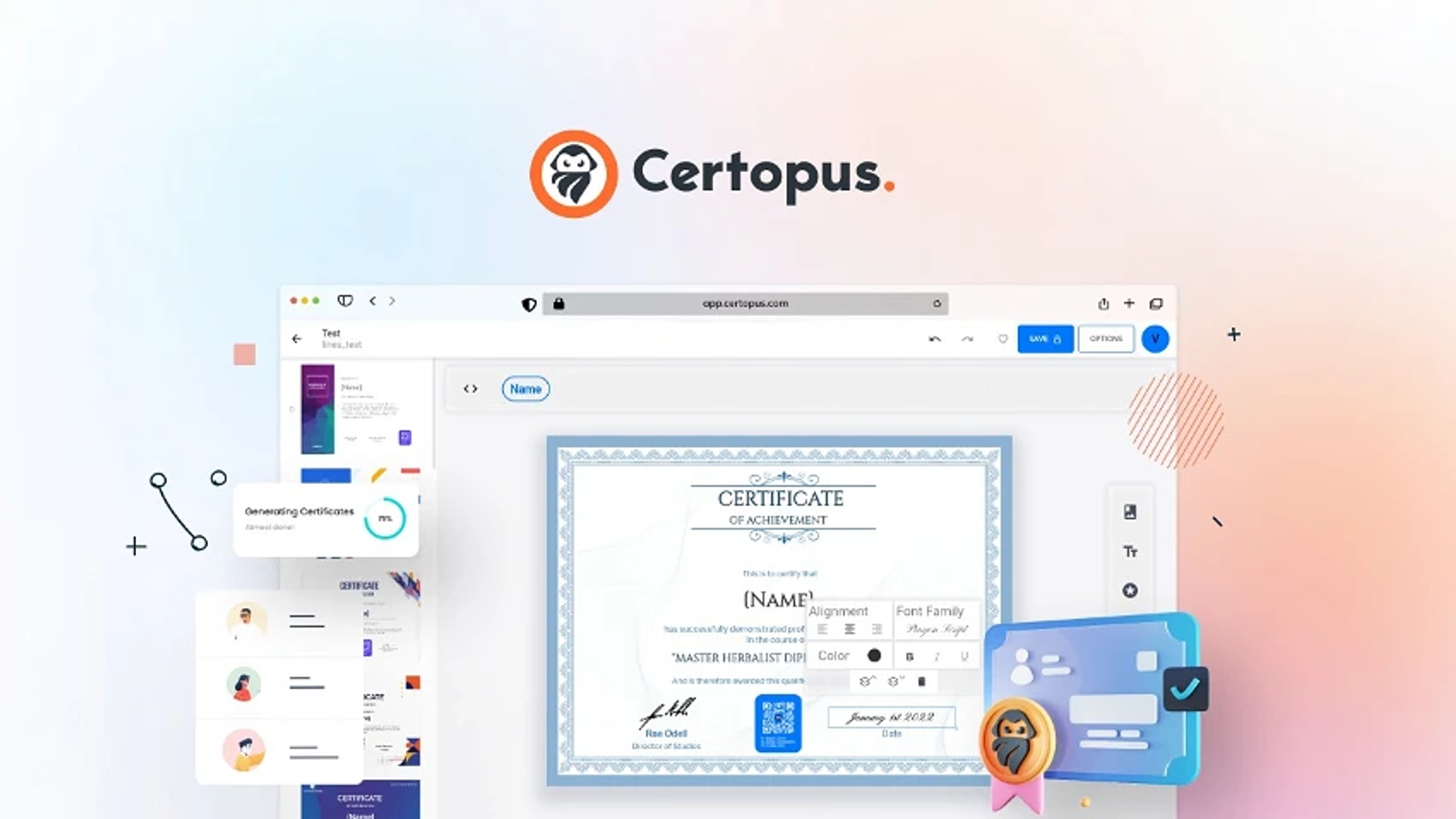Introduction
If you are a trainer, coach, speaker, or learning provider, you know how important it is to deliver high-quality and relevant learning experiences to your clients. You also know how competitive the training market is, and how challenging it can be to stand out from the crowd.

That’s why you might want to consider becoming a CPD accredited provider. CPD stands for Continuing Professional Development, and it refers to the ongoing learning activities that professionals undertake to enhance their skills and knowledge. CPD accreditation is a way of verifying that your training courses, events, or coaching sessions meet the highest standards of quality and value, and that they are suitable for formal CPD purposes.
Benefits of CPD accreditation
By becoming a CPD accredited provider, you can gain many benefits for your training business, such as:
- Attracting more clients who are looking for credible and recognized learning opportunities
- Increasing your reputation and authority in your field of expertise
- Enhancing your competitive edge and differentiation in the market
- Expanding your reach across multiple sectors and professions
- Improving your customer satisfaction and retention
- Demonstrating your commitment to excellence and innovation
In this article, we will explain what CPD accreditation is, how it works, and how you can apply for it with the CPD Standards Office, one of the world’s leading and internationally recognized organizations for CPD certification.
What is CPD Accreditation?
CPD accreditation is a process of verifying the educational quality and value of training courses, events, coaching sessions, or other learning activities. It ensures that the learning outcomes, content, delivery methods, and assessment criteria of these activities conform to third-party industry standards and best practices.
CPD accreditation is not limited to any specific sector or profession. It is applicable to any field of knowledge or skill that requires continuous updating and improvement. Some examples of CPD accredited activities are:
- Face-to-face training courses and events
- Online courses and e-learning modules
- Webinars and podcasts
- Conferences and workshops
- Coaching and mentoring sessions
- Speaking engagements
- Apprenticeships
- Structured reading
CPD accreditation is not mandatory, but it is highly recommended for trainers and learning providers who want to demonstrate their credibility and professionalism to their clients. Many professionals are required or encouraged by their employers, regulators, or professional bodies to undertake a certain amount of CPD hours each year to maintain their license, certification, or membership. By offering CPD accredited activities, you can help them meet their CPD requirements and provide them with valuable learning experiences.
How to get CPD Accredited?

CPD accreditation is provided by independent organizations that have the expertise and authority to assess and certify learning activities. One of these organizations is the CPD Standards Office (CPDSO), which was established in 2010 as the first accreditation service to develop standards for specific CPD learning activities in consultation with professional bodies, regulators, employers, and learners.
The CPDSO offers a simple and straightforward process for becoming a CPD accredited provider. Here are the steps involved:
Step 1: Book a Free Consultation Call
The first step is to book a free consultation call with a CPDSO advisor who will discuss in detail the assessment criteria and talk through the accreditation options available. The advisor will help you decide which option best suits your organization and training offering, based on factors such as:
- The type and format of your learning activities
- The number of activities you want to accredit
- The duration of your activities
- The target audience of your activities
- The level of support you need from the CPDSO
The advisor will also guide you through the application and registration process, which involves filling out an online form and paying a one-time registration fee.
Step 2: Submit Your Training Portfolio and Materials
The second step is to submit your training portfolio and materials directly to the Assessments Team. The portfolio should include:
- A list of your learning activities with titles, descriptions, objectives, outcomes, duration, delivery methods, assessment methods, etc.
- Samples of your course materials such as slides, handouts, manuals, quizzes, etc.
- Evidence of learner feedback such as testimonials, reviews, surveys, etc.
The Assessments Team will review and evaluate your portfolio within six weeks. They will use a rigorous assessment framework based on four levels of evaluation:
- Level 1: Reaction - How did the learners react to the learning activity?
- Level 2: Learning - What did the learners learn from the learning activity?
- Level 3: Behavior - How did the learners apply what they learned to their work or personal life?
- Level 4: Results - What were the outcomes or benefits of the learning activity for the learners, their organizations, or society?
The Assessments Team will liaise with you throughout the process and provide you with constructive feedback and recommendations. They will also give you access to a community digital badge that you can use to promote and demonstrate to your clients that you are undergoing a third-party assessment with the CPDSO for your training portfolio.
Step 3: Receive Your CPD Approved Status
The final step is to receive your CPD approved status and certificate of achievement. This means that your training portfolio has met the CPDSO standards and criteria, and that you are now a recognized and certified CPD provider.
You will also receive an authenticating symbol that you can use on your accredited training materials, websites, social media, and other official documents. The symbol shows that your learning activities are compliant with industry standards, knowledge, regulations, and guidelines.
Furthermore, your accredited activities will be listed in the CPD Directory, which is found on the CPDSO website. The directory provides information about your organization and portfolio in detail, and helps potential clients find and contact you.
How to maintain and renew CPD accreditation?
To keep and renew your CPD accreditation, you must follow the standards and regulations of the accreditation body that awarded it. Certification bodies may have different regulations and procedures for maintaining and renewing CPD accreditation, so always check with them before applying.
However, some common steps and tips for maintaining and renewing CPD accreditation are:
- Record your CPD activities, such as the date, duration, provider, learning outcomes, and CPD points or hours of each activity.
- Ensure that your CPD activities are relevant, quality, effective, and impactful for your professional development and career.
- Meet your accreditation body's minimum CPD requirements and criteria, such as the number of CPD points or hours per year, the types and categories of CPD activities, and the balance and diversity of CPD activities.
- Submit your CPD portfolio or logbook to your accreditation body for review and assessment before the expiry date of your accreditation.
- Receive feedback and confirmation from your accreditation body about your CPD portfolio or logbook and your renewed accreditation.
Examples of CPD accreditation for different industries
CPD accreditation for teachers: Teachers can earn CPD credits by attending workshops, seminars, and online courses on pedagogical practices, curriculum creation, classroom management, and educational technology.
CPD accreditation for healthcare professionals: Healthcare workers, including doctors and nurses, can obtain CPD accreditation by participating in continuing medical training, attending conferences, and taking courses relating to patient care, medical research, and healthcare developments.
CPD accreditation for engineers: Engineers attain CPD accreditation by engaging in engineering seminars, industry-specific workshops, and advanced technical training that ensures they stay up-to-date with the latest engineering practices and standards.
How Certopus can help

Certopus is a platform that helps your certify learners for your CPD accredited courses. CPD accreditation is a process that verifies the quality and relevance of your learning activities. If you want to become CPD accredited, Certopus can help you in the following ways:
- You can use Certopus to create professional and attractive certificates that reflect your brand and learning objectives. You can choose from a variety of templates or customize your design.
- You can use Certopus to issue certificates in bulk and email them to your learners. You can also integrate Certopus with your existing learning management system or application using integration platforms.
- You can use Certopus to ensure the authenticity and validity of your certificates. Each certificate has a unique ID and a QR code that can be scanned to verify the certificate details. You can also white-label your certificates and use your domain name which will build a solid brand value for your courses and promote word-of-mouth marketing.
- You can use Certopus to monitor the performance and impact of your certificates. You can access analytics and insights on how many certificates were issued, viewed, downloaded, shared, or added to LinkedIn. You can also collect feedback from your learners and improve your learning outcomes.
Frequently Asked Questions (FAQ)
Do I need an official training qualification to qualify as a CPD Trainer?
The short answer is yes, it is highly recommended that you have a formal training qualification in order to become a CPD Trainer.
Is there a difference between CPD accreditation and certification?
Yes, there is a difference. CPD Accreditation means that you have been validated by a third party to be compliant with CPD standards. CPD Certification is generally used for the courses you offer as a CPD accredited trainer / institute.
Is CPD accreditation internationally recognized?
Yes, CPD is recognised globally by companies, professional groups, and educational institutes alike; nevertheless, it is crucial to highlight that there is currently no standardised framework for CPD.
Need More Information?
Schedule a demo to learn more about Certopus for your business use case, or if you have any questions, don't hesitate to contact us. We would be delighted to assist you. Finally, if you're on social media, follow us to remain informed about our latest developments and learn more about digital credentials like certificates, badges, and micro-credentials.
Recommended Articles:
_(1).jpg?table=block&id=a166ea6b-b0c2-44f6-a441-707d5d22a0e3&cache=v2)


